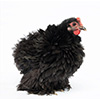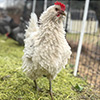Frizzle Chickens: Reasons To Buy
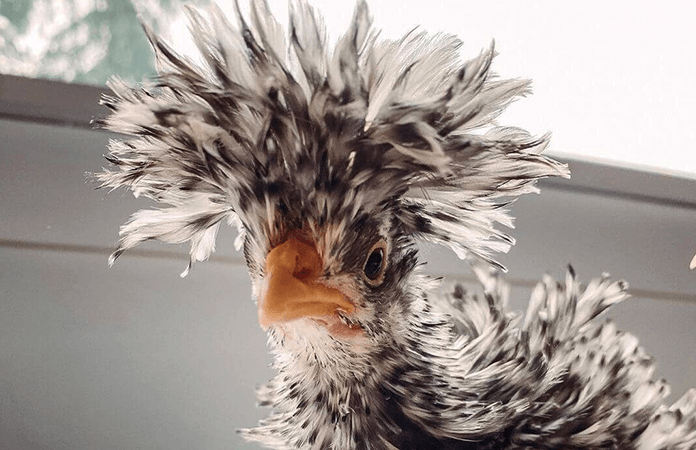
Chicken Fans is reader-supported. When you buy through our links, we may earn a commission. Learn more about our privacy policy and disclaimer.
Frizzle chickens are conquering the world with their fluffy look and cute appearance. They’re a perfect beginner breed, suitable for children, and Instagram-worthy!
But that’s not all! If you’re still doubting about adding a Frizzle chicken to your flock, we’ll give you ten reasons why this is a great idea.
- Frizzle chickens lay around 3 eggs weekly
- Excellent pet chickens
- Social media superstar & kid-friendly
- Some can be broody
- Extremely friendly & good looking
- Cuddly pet chickens
- Docile & beginner-friendly
- Not the best egg-layers
- Some are broody
- Small eggs
What is a Frizzle Chicken?
A frizzle chicken has feathers that curl outward, creating a unique look.
It’s important to know that the frizzle we mention is not a specific breed but a feather variation found in various breeds due to the carrying of the ‘frizzle-gene’.
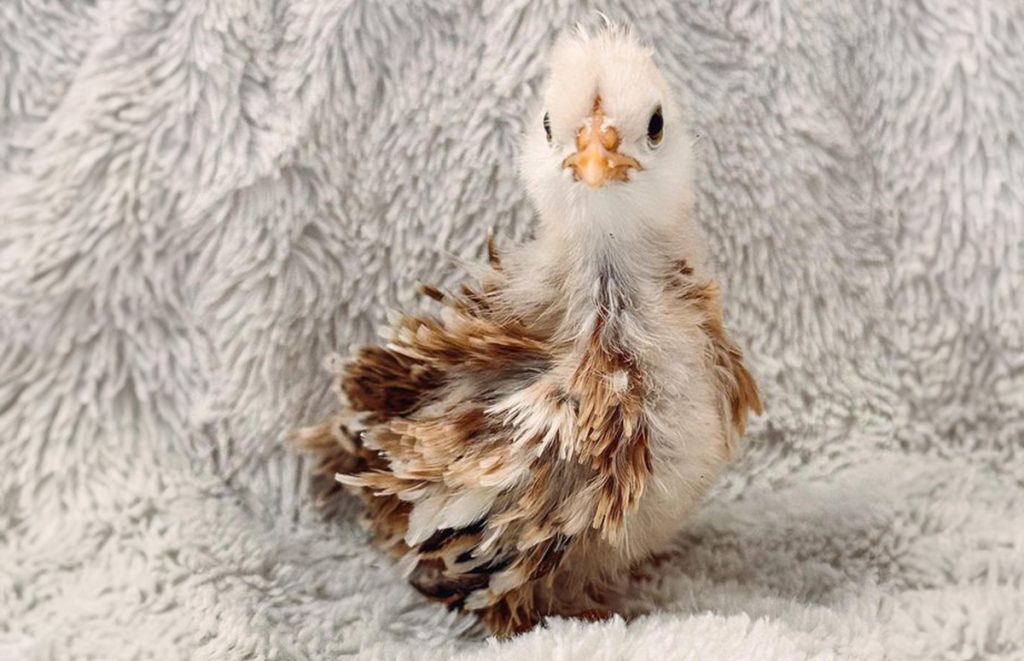
This pattern is most commonly seen in breeds like the Cochin, Pekin, and Polish.
The frizzle feather is caused by a specific gene, the frizzle gene, which can be found in chickens from any breed. The Frizzle is considered a distinct breed in some places like Europe and Australia due to its curly feathers.
10 Reasons to Add a Frizzle Chicken to Your Flock:
- Excellent pet chickens
- Beginner-friendly
- Social media superstar
- Great companion for children
- Decent egg-layer
- Good moms
- Docile, not flighty
- Interesting for breeders
- Can be kept in small backyards
- Large color and breed variations
1. Excellent pet chickens
Yes, a Frizzle chicken is a chicken breed (at least in some countries), but it’s mostly seen as a chicken variety instead of a breed. This means you can have a frizzled variety in many chicken breeds, such as Polish, Silkies, and Cochins.
Since Frizzle chickens are mostly a mix of Silkies, Polish, or Cochins, they inherit this breed’s personality and characteristics, which makes them excellent pet chickens.
They are cuddly and friendly and a great addition to your backyard flock.
2. Beginner-Friendly
Frizzle chickens are low-maintenance, hardy, and easy to care for.
They do well in most climates and don’t need much extra care besides water, food, and shelter.
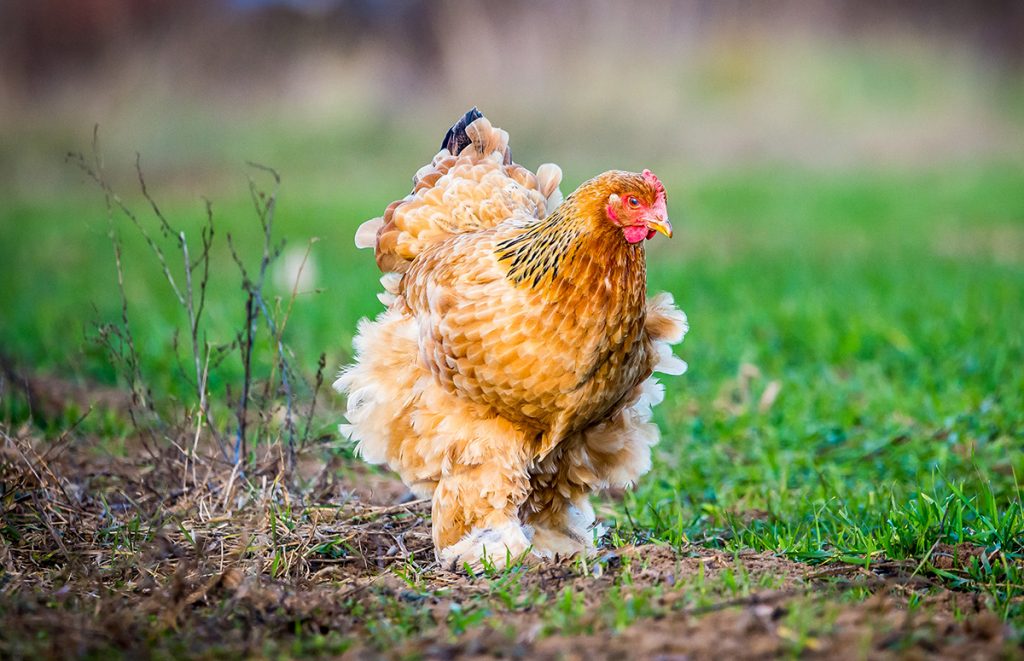
As Frizzle chickens are primarily small birds, they don’t need much food.
But, depending on which type of Frizzle chicken you’re planning to keep, there are some things to consider.
Things to keep in mind when housing a Frizzle chicken:
- Frizzle chickens don’t like wet or muddy environments. It can cause foot problems and fungi or make them soaked, as some types don’t have waterproof feathering.
- Most chickens, including Frizzle chickens, don’t stand heat very well. During heat waves, keep an extra eye on them and keep them cool.
- Some Frizzle chickens have feathered feet and shanks. Check their feet at least every two weeks to ensure they don’t suffer from foot problems or fungi.
- Frizzled Cochins are prone to obesity. Don’t feed them too many table scraps or treats.
3. Social media superstar
If you’re looking for a unique chicken to show off on Instagram, a Frizzle chicken is the right choice.
They’re not only special-looking but also funny, and everyone will love them.
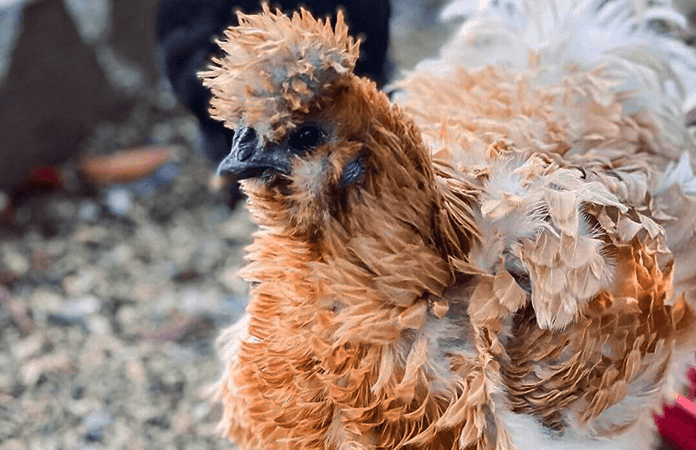
This breed comes in various colors and looks, so whatever variety you choose, there is always room to experiment with other types.
Plenty of popular Instagram accounts make a living showing off their flock. But it would help if you had more than an average-looking flock to succeed and set up a popular Instagram account.
You’ll have to be original in both breed choosing and content. A Frizzle chicken has everything it takes to become an Instagram queen.
So why shouldn’t you give it a try?
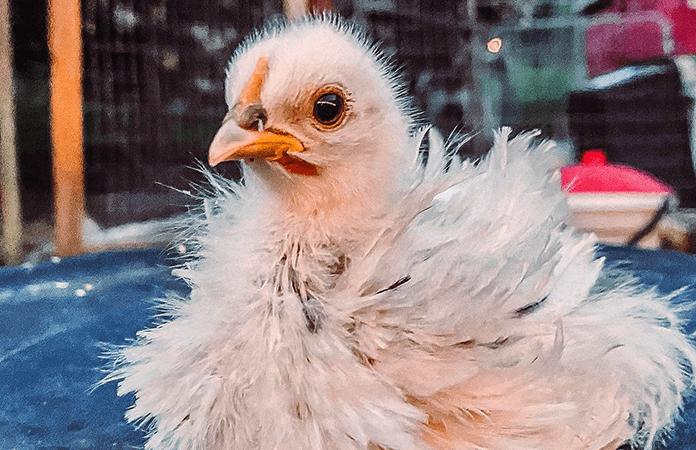
Are you looking to make it as a chicken influencer?
Take a look at our ‘10 Fancy Chickens That Go Viral On Social Media‘.
4. Great Companion for children
Kids love Frizzle chickens because of their unique looks and fluffy appearance. And that love is mutual.
Frizzle chickens love the attention they get and can be picked up and held as lap chickens when trained early.
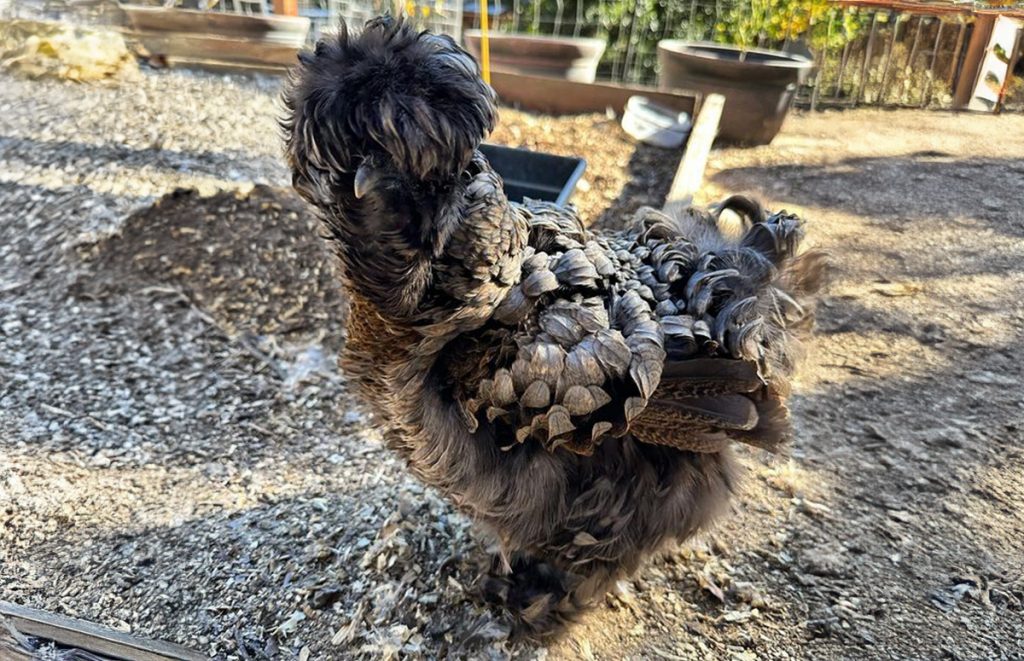
Of course, plenty of other chicken breeds are great for kids. But not all have the best size for kids to handle them easily.
Think about an Orpington, for example. These gentle giants are amazingly kind and sweet but not a suited lap chickens for small children.
Many Frizzle chickens, however, are small, so children will have no trouble picking them up for petting.
Keeping a pet is also a great lesson in responsibilities for kids.
Dogs, cats, and rabbits are also great options, but they require more work and are not always low-maintenance.
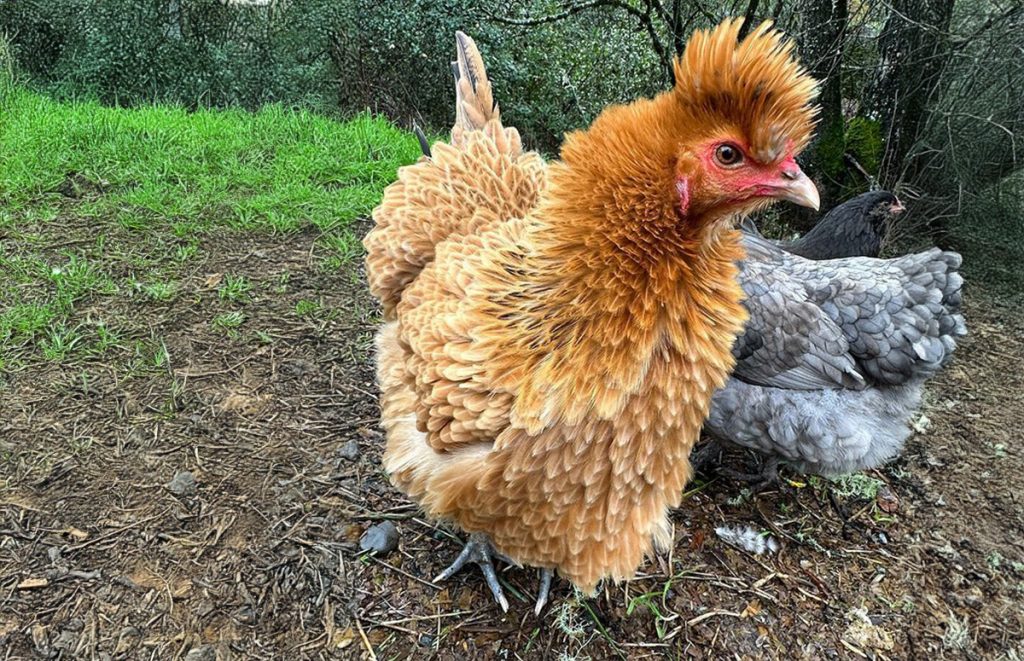
On top of that, some dogs or cats can get as old as 20 (!) years.
If you’re not looking for a pet that needs much more extra care but does teach your kids about caring for, cleaning the coop, and feeding, a pet chicken is a way to go!
If you haven’t had enough about kid-friendly and fluffy chicken breeds, check out our article ‘10 Fluffy Chicken Breeds That Are Kid Friendly‘.
5. Decent egg-layer
Let’s face it: Most people keep chickens mainly to collect a daily amount of yummy, fresh eggs. It’s no extra work for the chickens; it’s just their way of paying rent!
Most Frizzle chickens are a Cochin, Polish, or Silkie mix, and all these breeds are decent egg layers.
Keeping a Frizzle chicken will ensure you at least three eggs per week per hen.
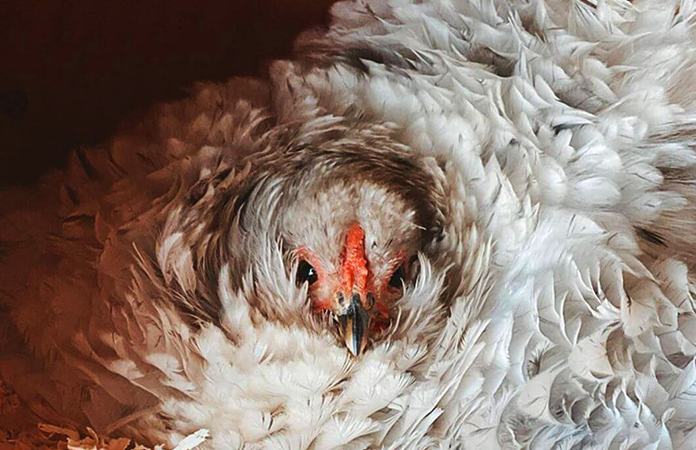
Number of eggs you can expect from Frizzle chickens:
- Silkie mix: 3 eggs per week, but are by far the broodiest birds in the world. Roughly, you’ll get around 100-120 eggs yearly. Silkies will also decrease egg production during winter and hot summer months.
- Cochin mix: 3 to 4 eggs per week. They are good egg layers. But they can be pretty broody birds, and all broody chickens stop producing eggs when sitting.
- Polish mix: Up to 4 eggs per week. Polish chickens are rarely broody but significantly decrease egg production during winter months.
6. Good moms
With broodiness comes good motherhood. Both Silkies and Cochin chickens are excellent mothers and are even used to hatch other chickens’ eggs.
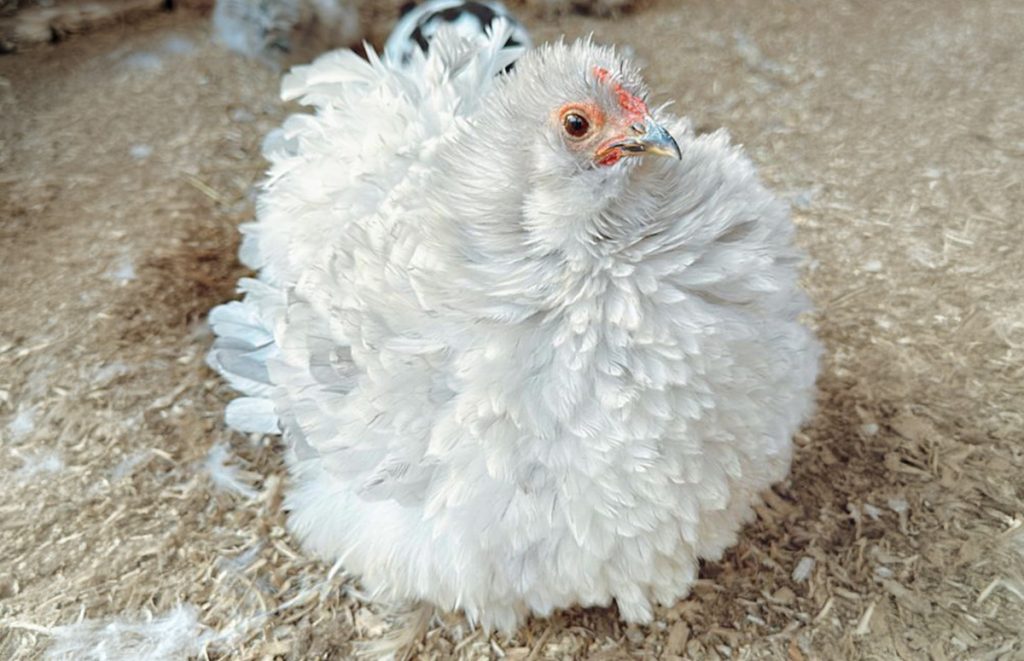
The incubation period for chicken eggs is 21 days.
Hens rarely leave the nest during this time and constantly stay on the eggs.
You must keep an extra eye on broody hens, whether just broody or sitting on eggs, because some hens forget to eat and drink. Obviously, this causes health issues.
If you’re not planning on hatching eggs, and your hen does not stop broodiness by herself, you must get her off the nest and ensure she eats and drinks enough.
7. Docile, not flighty
Frizzle chickens are docile. They’re fine in confinement and will not try to escape the run by flapping over the fence.
Because of their unique feathering, they can not fly, although most chickens aren’t very good at it.
The feathers of a Frizzle chicken are curled upward, which makes it impossible for these birds to fly.
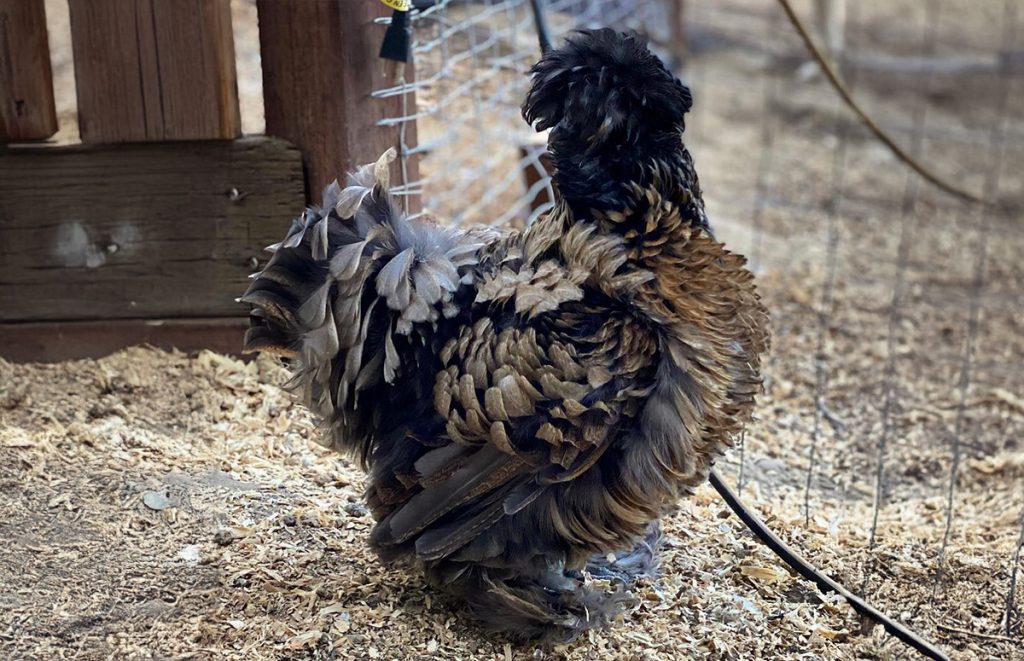
However, they can still jump over small fencing, although most are fine in confinement and won’t try to escape.
This makes them an excellent chicken to keep in a suburban neighborhood, as they won’t wander off into your neighbor’s backyard.
8. Interesting for breeders
Frizzle chickens are conquering the world and have become one of the most popular breeds for families with small children. But they’re not easy breed to breed with.
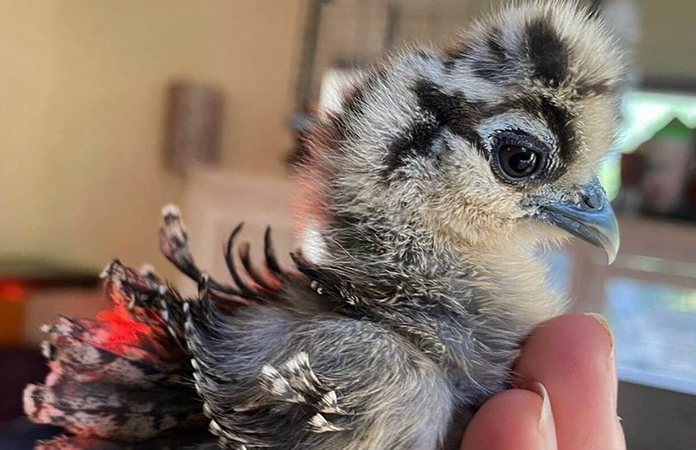
The gene that’s responsible for the frizzle look does not breed true. This means when combining both parents with frizzle genes, this does not mean their offspring will be frizzled.
A respectable breeder will only combine frizzle chickens with normal feathered chickens. This way, their offspring will be a combination of frizzled, non-frizzled, and half-frizzled chicks.
On average, 50% of the offspring will be a frizzle chick. You won’t notice the variety of feathering until the chicks are two weeks old.
So, if you’re willing to breed with these birds and create your own Frizzle chickens, you’ll earn a little extra pocket money.
Be aware that only 50% will be frizzled, and some will be roosters.
9. Can be kept in a small backyard
Frizzle chickens are mostly a mix of smaller breeds and docile breeds. They’re fine in confinement and won’t need a large backyard.
This means they can be kept in relatively small backyards if they have the space to stretch their legs, scratch their feet in the dirt, and take a dust bath.
10. Large color and breed varieties
Frizzle chickens come in all sorts of colors and breeds.
You can either cross two chickens of the same species; for example, a Frizzle Silkie and a smooth Silkie will get you Frizzle Silkies.
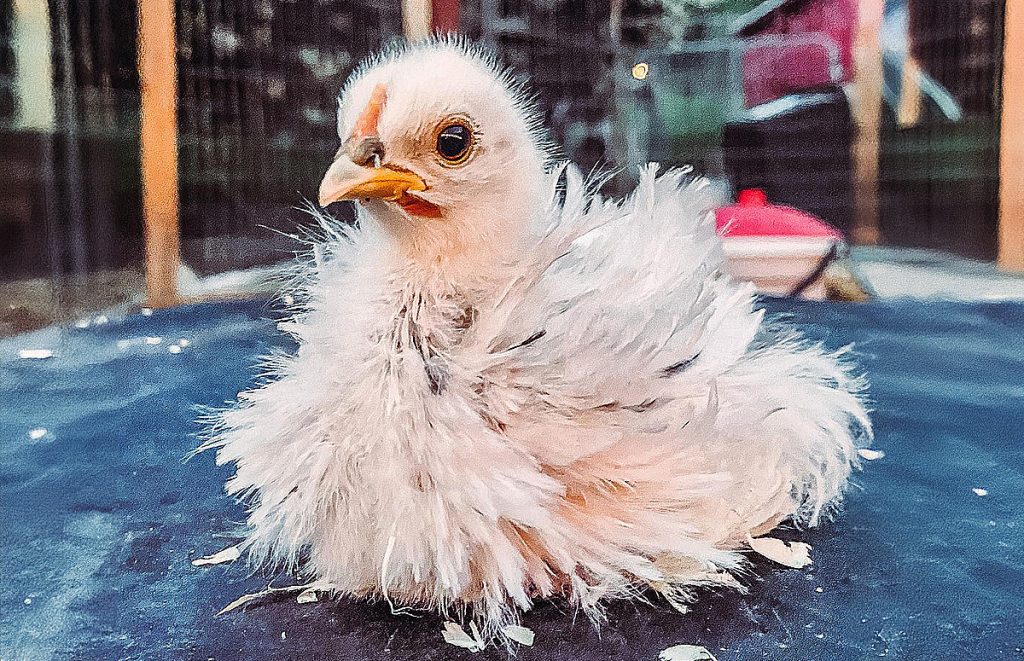
But you can also combine a Frizzle Cochin with a Smooth Silkie to create a combination of Frizzle and non-Frizzle Cochin Silkie mixes.
These are just two examples; many more variations are possible.
Next to the various breeds, there are plenty of colors and feather patterns to choose from.
Frizzle Chicken Genetics
Frizzles exhibit a captivating example of genetic variation in feather designs. The frizzled feather appearance in these chickens results from a unique genetic trait.
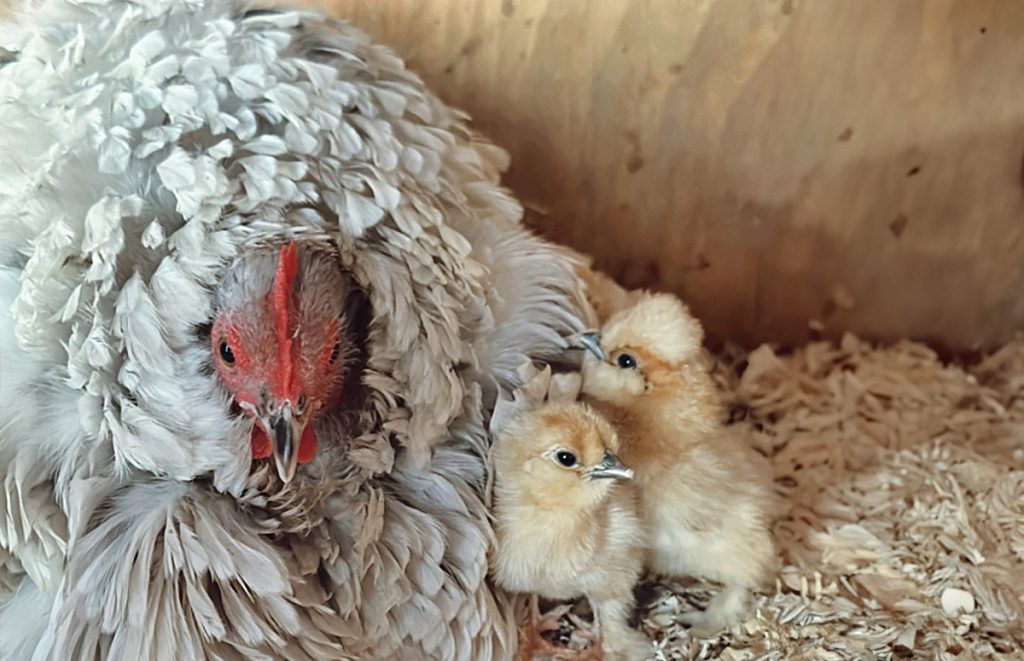
To understand the genetics involved in frizzle chickens, we must explore how this trait is inherited and expresses itself.
The gene responsible for the frizzled feathering is incompletely dominant. This means that it doesn’t fully dominate the effect of the normal gene for feather patterns found in most chickens. As a result, not all chickens carrying this gene will show frizzled feathers.
Frizzled chickens carry only one copy of the frizzle gene and one copy of the normal feather pattern gene, so not all chickens have frizzled feathering.
When two frizzled chickens (heterozygous for the gene) are bred together, their offspring will inherit the gene. The inheritance follows a specific ratio:
50% of the offspring will be heterozygous and frizzled, inheriting one copy of the frizzle gene and one copy of the normal gene, resulting in frizzled feathers like their parents.
25% of the offspring will have normal feathering, inheriting two copies of the normal gene, which results in typical, non-frizzled feathers.
The remaining 25% of the offspring will inherit two copies of the frizzle gene, which leads to an exaggerated frizzled appearance. Their feathers are not only curly but also brittle, resembling pipe-cleaners.
In short, it’s not simply a matter of having the frizzle gene or not; the degree of curliness and feather brittleness depends on the specific combination of genes inherited.
Now, let’s leave the genetics-part behind us and discuss all the great qualities of these special birds.
Summary
If you want a unique-looking chicken in your flock, the Frizzle chicken is just what you need. They’re docile and friendly, and kids love them! Next to this, they are excellent pet chickens and can be kept in a smaller backyard. They don’t need much extra care and are a beginner-friendly breed. As Frizzle chickens come in various colors and breed varieties, you can choose whatever chickens suit you best.
To learn more about chicken breeds, check out our ‘Chicken Breeds Page‘ to see every specific breed we address. Or go to our listicle breed summary on ‘The Classroom‘, or, if you’re unsure where to start, take a look at our ‘Chicken Breeds: Ultimate Beginners Guide‘.
Credits for some of the mages and special thank you to @emseggers (IG), specializing in breeding Frizzle chickens.
